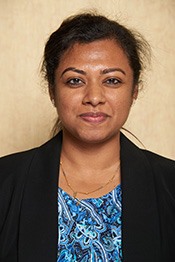A Robust Method to Quantitate Tracer Activity in Organs and Lesions with Clinical SPECT/CT Systems
Presentations
SU-C-TRACK 6-1 (Sunday, 7/25/2021) 1:00 PM - 2:00 PM [Eastern Time (GMT-4)]
Purpose: It is essential that a robust method be used to quantitate activity from SPECT/CT for organ based radiation dosimetry. Aim of this study is to validate the accuracy of a universal method to perform quantitative measurements across vendors and differing reconstruction methods.
Methods: An IEC Image Quality phantom cover was 3D printed to hold 1-2-3-4-5-6 cm diameter hollow spheres with a minimum separation of 2.5 cm between surfaces. The spheres and the phantom chamber had ⁹⁹ᵐTc sphere/background activity concentrations of no background, 8:1, 4:1 and 2:1. SPECT/CT acquisitions were performed on the Philips-BrightView and GE-Discovery-670 using clinical acquisition protocols. Quantitative SPECT reconstructions for: 1) BrightView was performed using SUV-SPECT on Hermes and 2) GE using (a) Q.Metrix on GE-Xeleris, and (b) SUV-SPECT on Hermes. Image reconstructions were iterative with CT attenuation-correction, scatter-correction and resolution-recovery. The total activity in the spheres was measured by placing volumes-of-interest (VOI) of diameter: 1) matching the sphere diameter (VOI₁), 2) expanded by 2 cm (VOI₂), and 3) expanded by 3 cm (VOI₃). VOI₂ includes spill-out of sphere tracer that is observed outside the sphere boundary. VOI₃ is to estimate background tracer activity concentration just outside VOI₂ and is needed to apply a background correction for VOI₂. The measured/true activity fractions (TF(spheres)) for the 6 spheres and the background concentration (TF(BKG)) were computed.
Results: Overall the TF’s were within 10% (GE) and 15% (BrightView) of the truth, except for scans with 2:1 sphere/background that has significant artifacts and non-visualization of all spheres that lead to measurement inaccuracies. Across all measurements, BrightView with Hermes reconstruction was 0.89±0.05, GE-Discovery-670 with Q.Metrix was 0.97±0.03 and with Hermes was 0.95±0.04.
Conclusion: Utilizing an expanded VOI to capture all sphere activity in the measurement together with a background correction is a robust method for performing quantitative analysis of SPECT/CT images.
Handouts
Keywords
Quantitative Imaging, Validation, SPECT
Taxonomy
IM/TH- Image Analysis (Single Modality or Multi-Modality): Quantitative imaging
Contact Email




